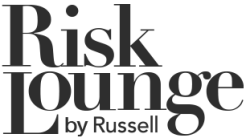
The latest research on the potential threat posed by European windstorms points to fewer events in future but warns of a higher intensity in those which occur.
Reinsurance broker Aon Benfield, has issued a briefing on uncommon European winter storm tracks in conjunction with the University of Cologne. The research points to a lower total number of events in the future but indicates intense storms moving over the North and Baltic Seas towards Eastern Europe, following a similar path to windstorm Kyrill.
Dr Joaquim Pinto from the Institute of Geophysics and Meteorology at the University of Cologne – part of Aon Benfield Research’s academic and industry collaboration – explains: “Scientific research shows that the storm climate in Europe has changed considerably over the past 130 years, exhibiting decadal periods of high and low activity. The last decade was characterized by average or calm conditions, following a period of strong activity which peaked during the early nineties. The occurrence of recent storms like Klaus, Kyrill and Xynthia are therefore considered to be a part of the climate system’s natural variability.”
In recent years, Europe has witnessed major damage from winter storms Klaus, Kyrill and Xynthia which followed uncommon tracks. These travelled eastwards and on a lower latitude than usual along the edge of the dominant North Atlantic storm track.
Dr Adam Podlaha, international head of Impact Forecasting, commented: “Central and Eastern Europe’s insurance market penetration continues to grow, resulting in a gradual increase in exposure. While the meteorology may remain mostly unchanged, losses in the near future might increase, thus heightening the appetite for understanding the risks to the region.”
His views were backed by Dr Alexandros Georgiadis, catastrophe model developer at Impact Forecasting, who added: “Existing catastrophe models only partially capture the climatological variability of European windstorms. The next generation of catastrophe models must address these challenges as model developers expand coverage into new European territories, responding to higher insurance market penetration in Central and Eastern Europe.”





